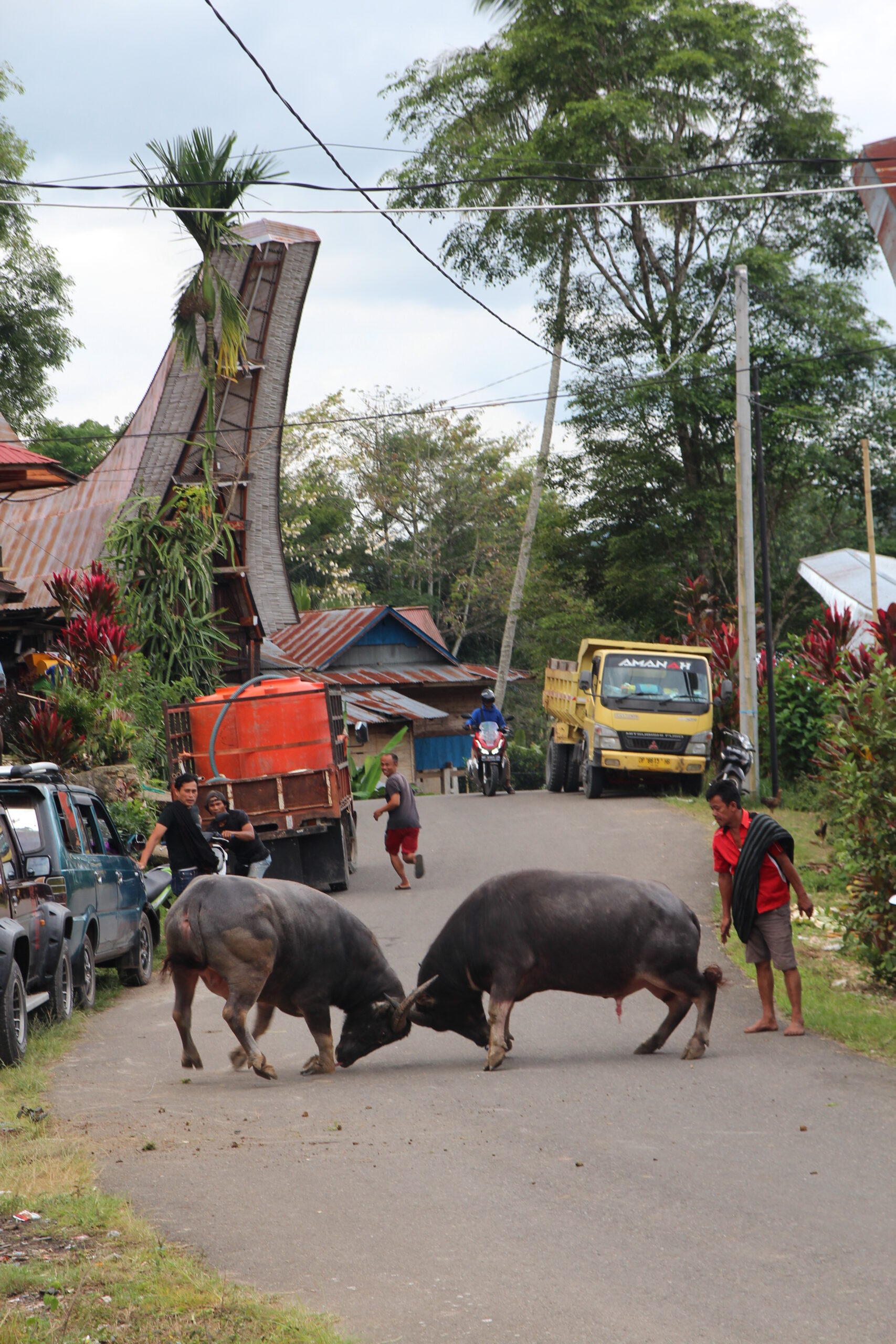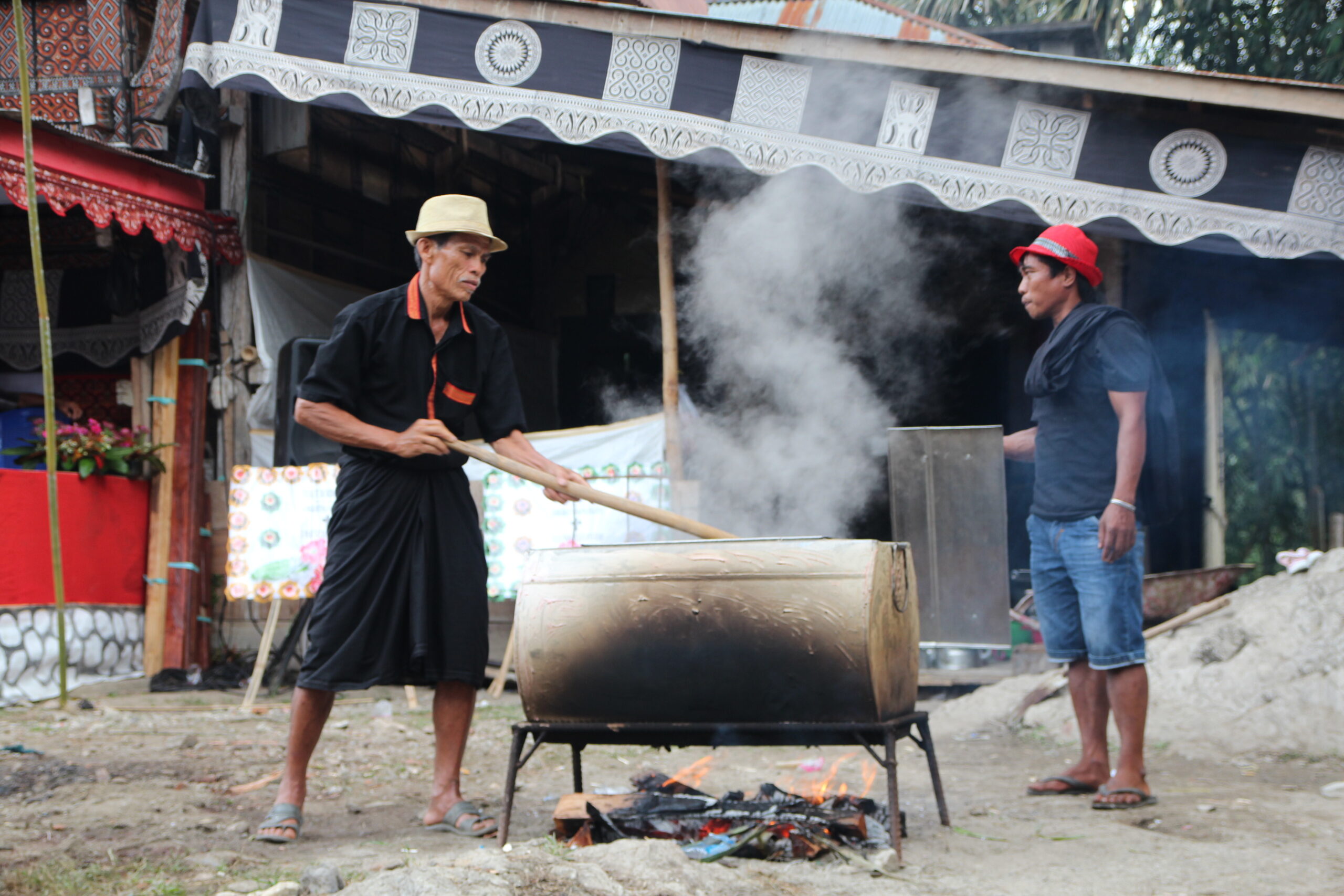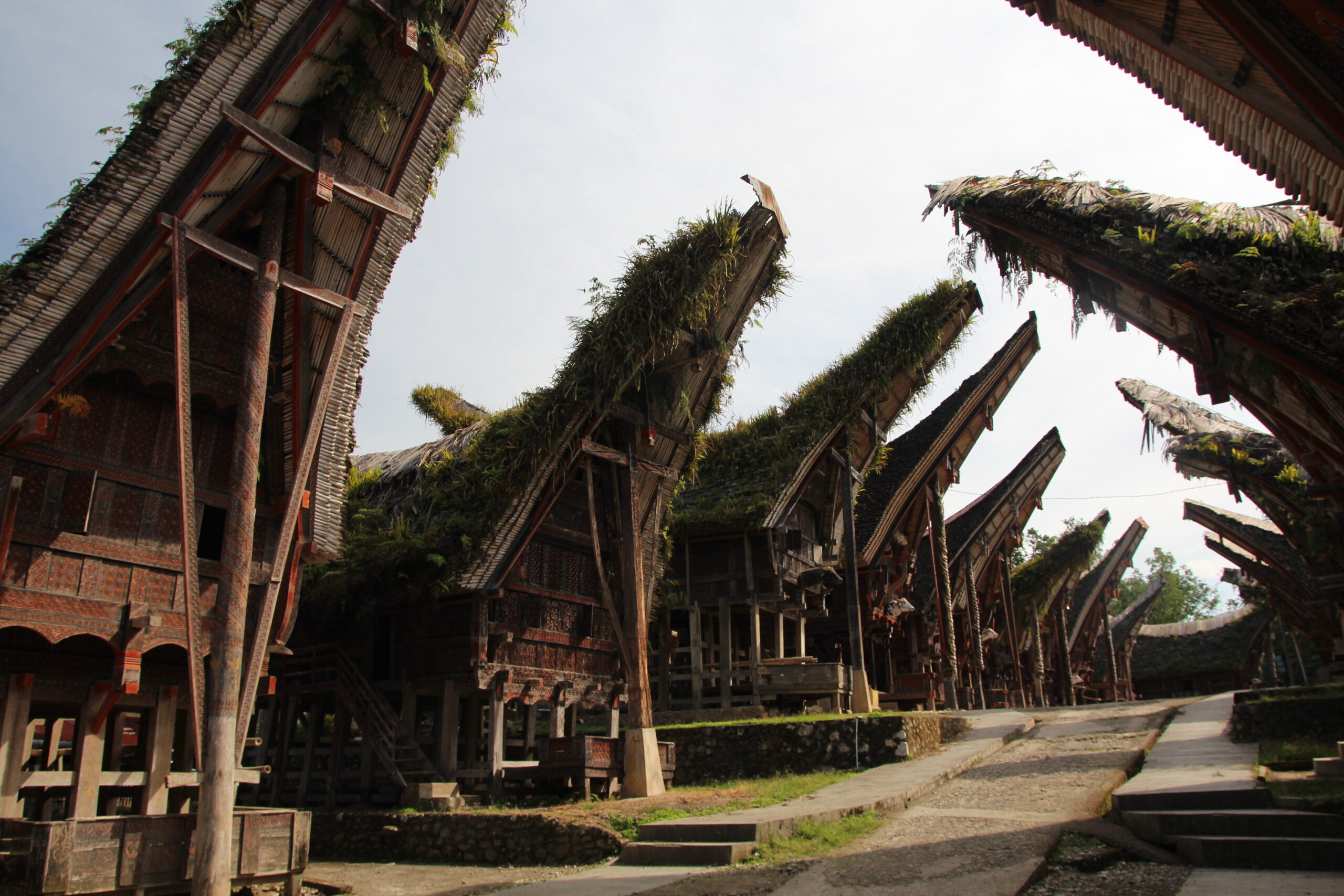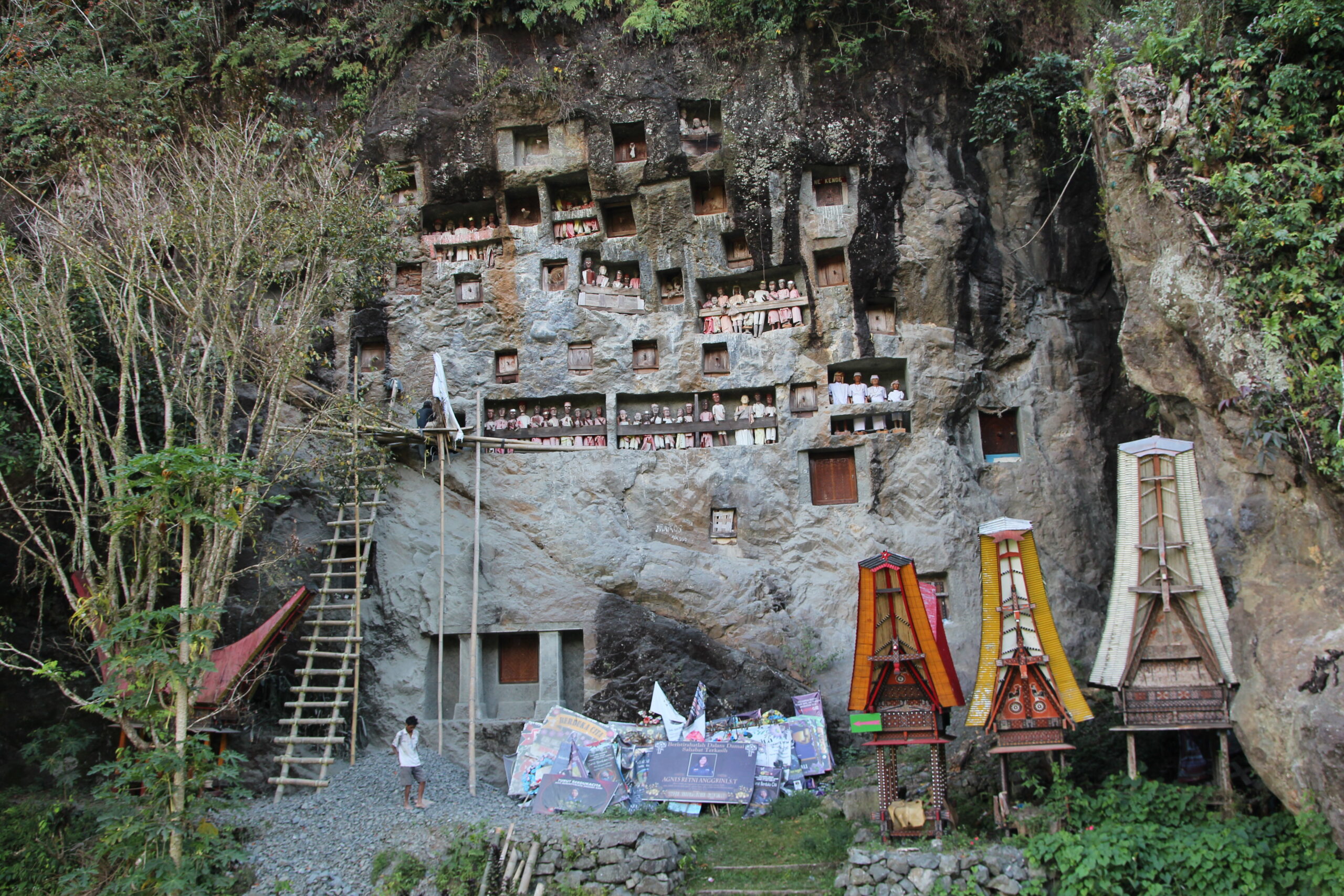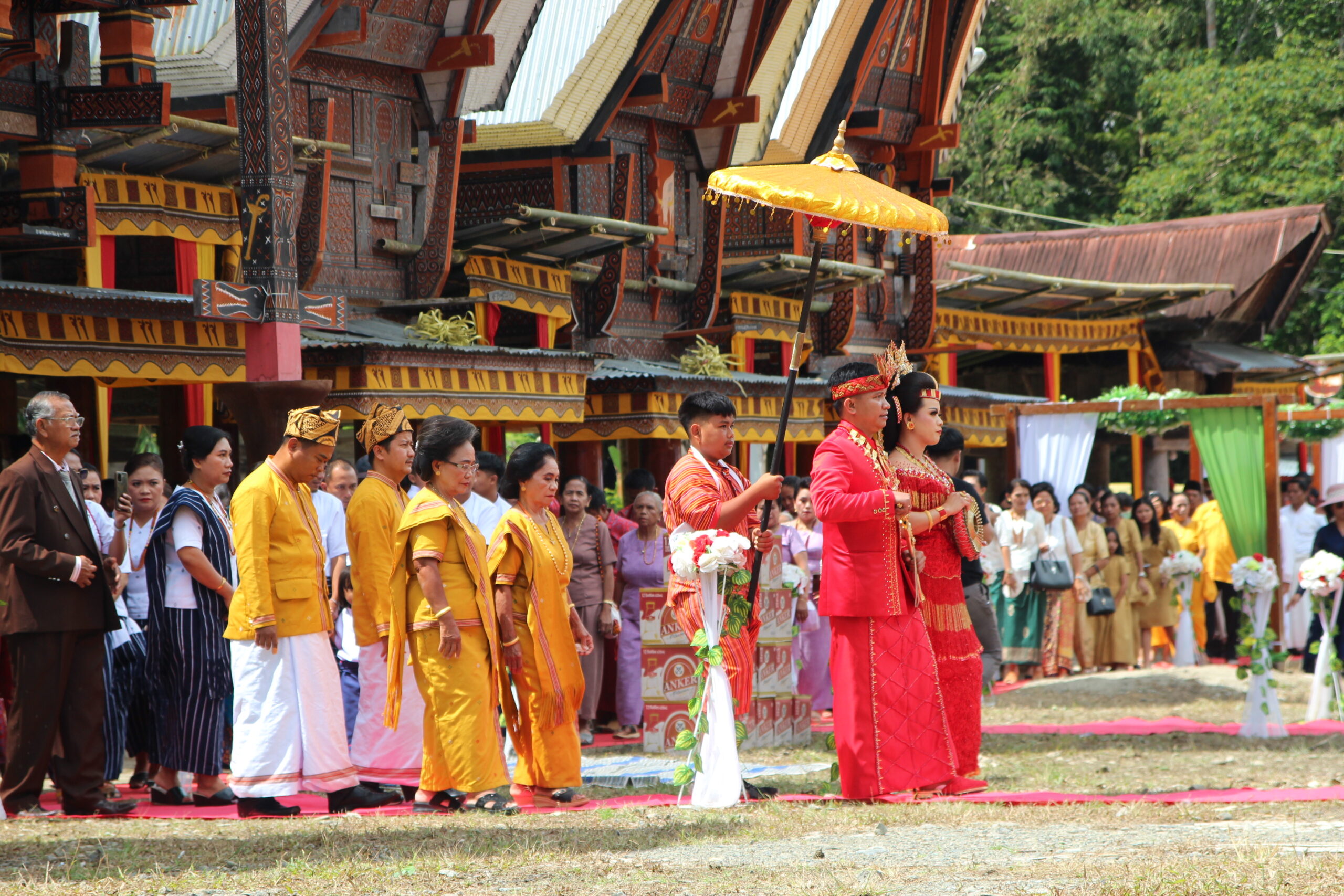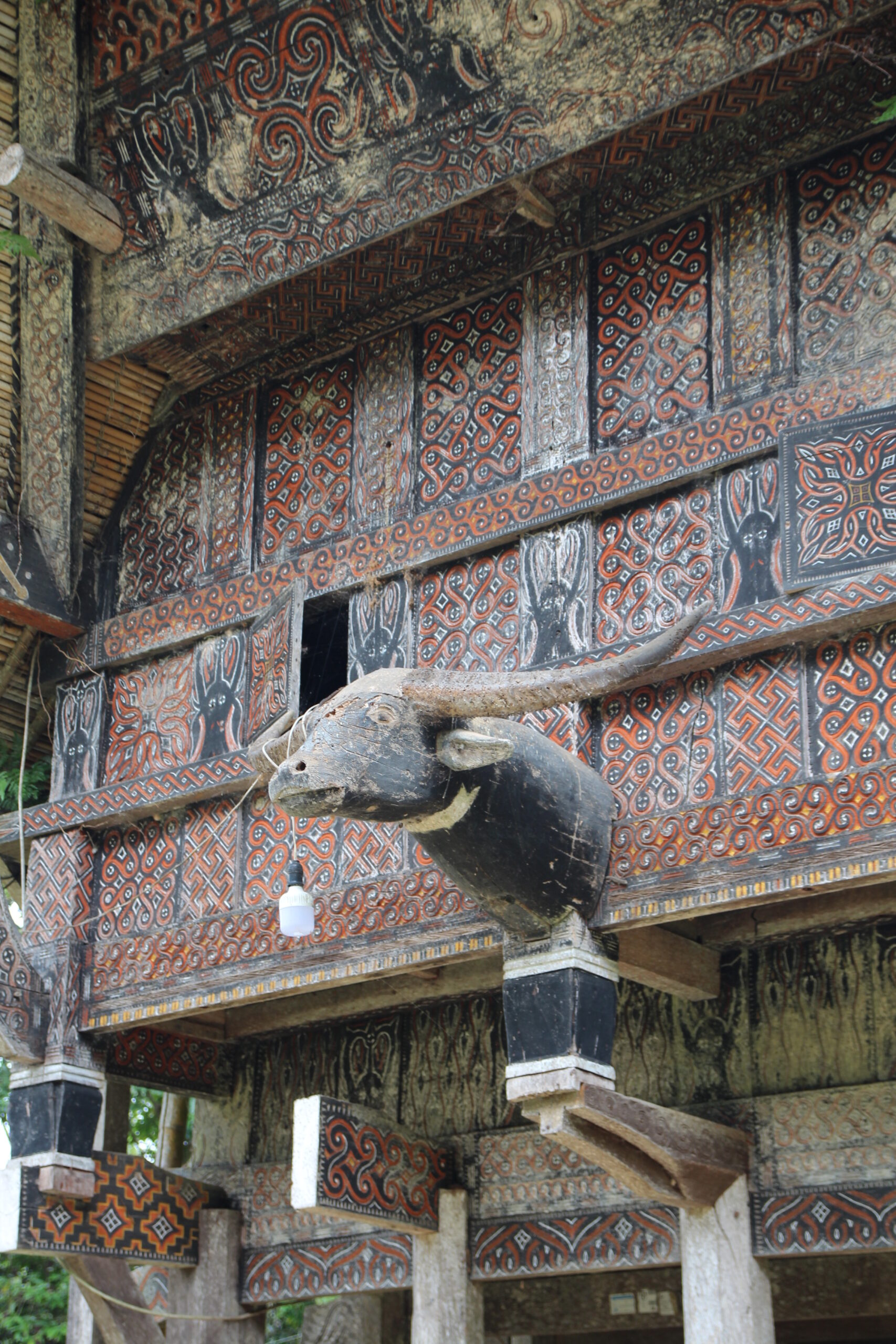Tana Toraja
The land of the DeadTana Toraja is situated in the highlands of South Sulawesi. The region was isolated from the outside world for a long period of time which led to the development of a unique belief system and culture.
The original, animist religion of Torajans is known as “Aluk” (“the way” ) or “Aluk to dolo” (“the way of the ancestors”). With time Christianity and Islam arrived in the region and most Torajans converted to these but mixed them up with elements of their religion, so as a result animist beliefs and traditions are still alive and have a great importance in everyday life.
According to Aluk, the spirit of a deceased person can only enter the afterworld, if the funeral rituals are performed properly according to the social status. The spirit will be guided to this world by a buffalo, so sacrificing buffalos is a mandatory element of local funerals.
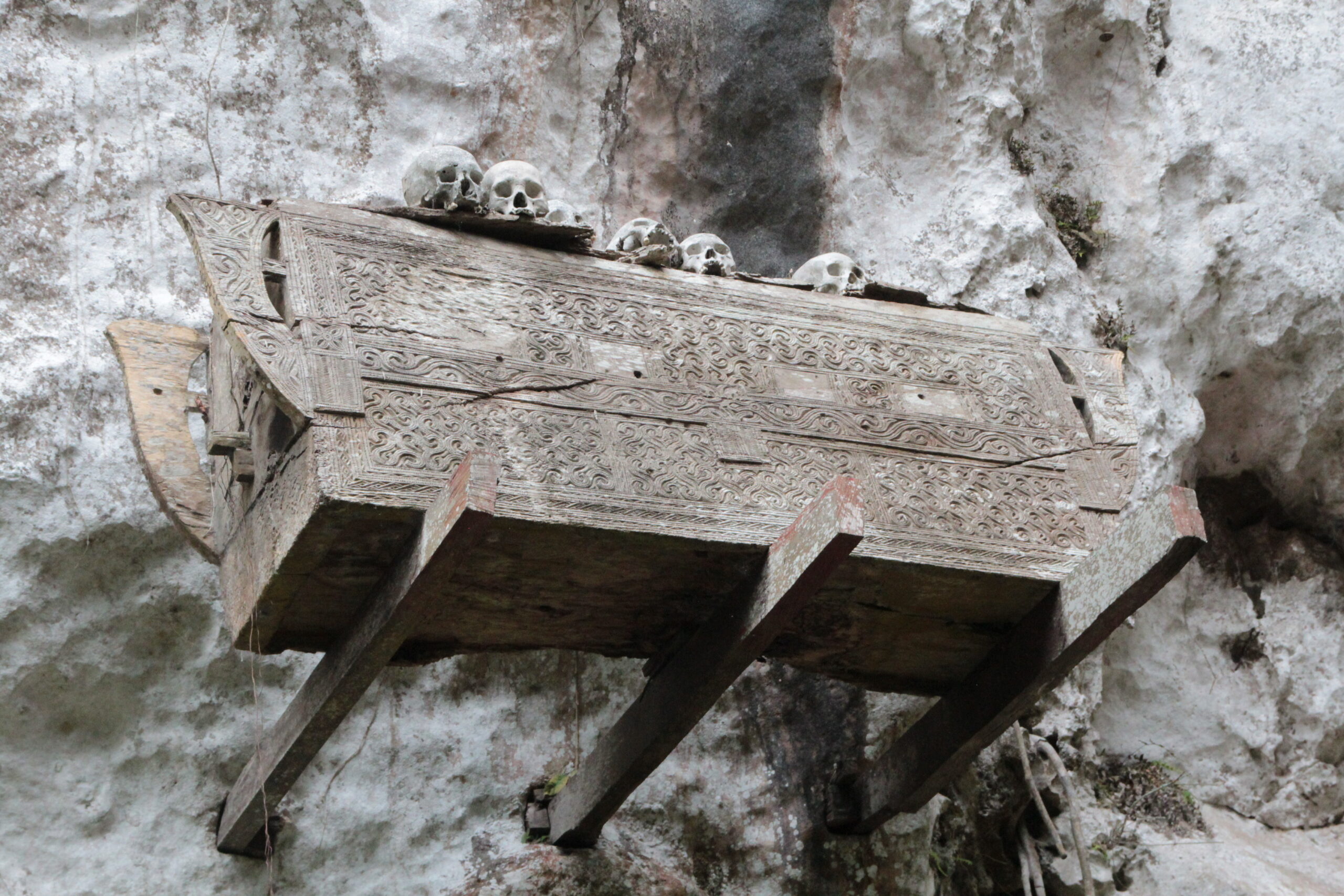
Hanging grave at Buntupune
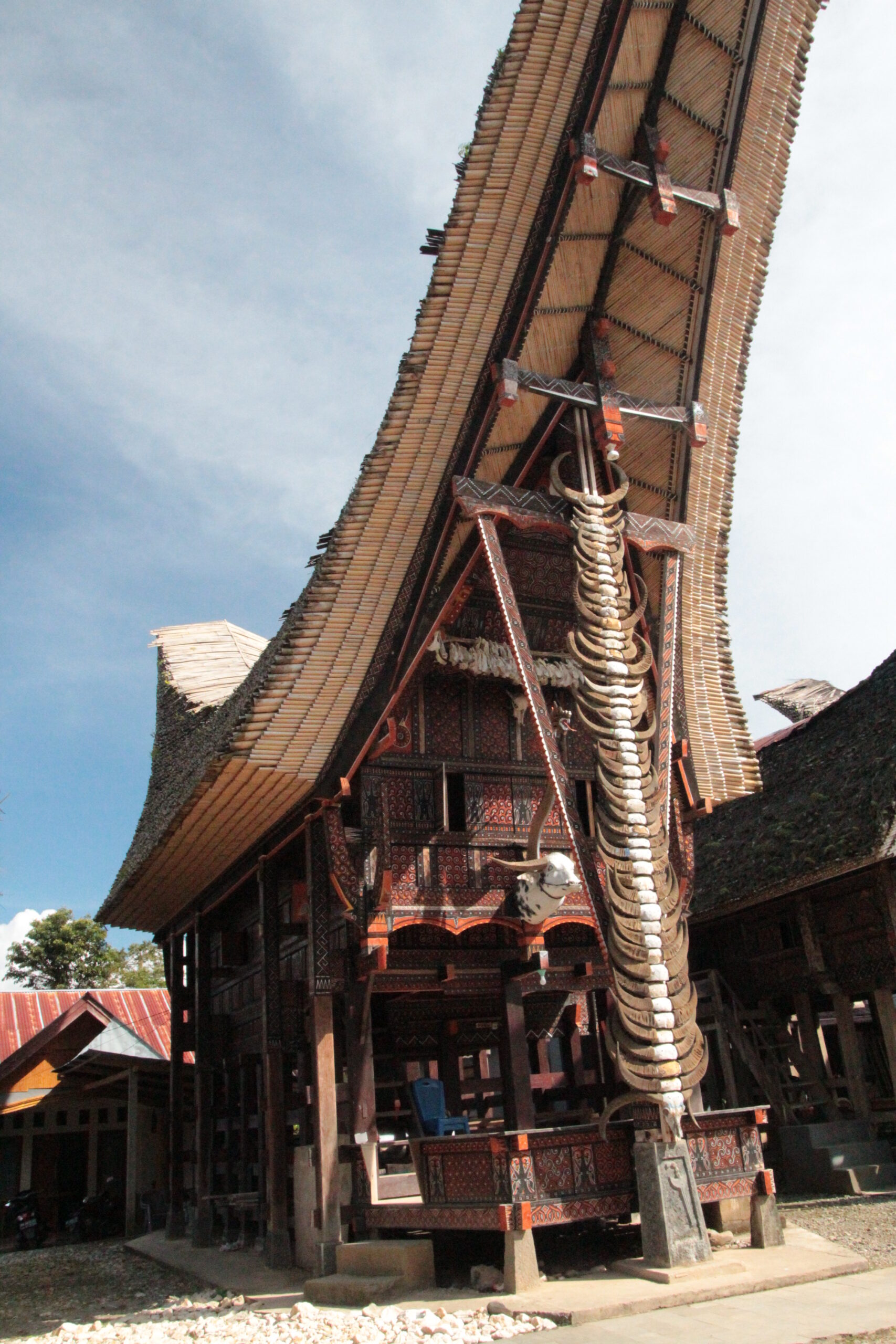
Tongkonan in Palawa village
The local architecture is also a very characteristic part of Tana Toraya. Anywhere you go in the region, you will see the impressive “Tongkonan” houses with their boat-shaped roofs. They are also called ancestral houses because they represent a link to the ancestors and they used to be the center of family and social life.
Tongkonan houses are decorated with buffalo horns and detailed, colorful carvings. These carvings are based mainly on spiritual motifs and symbols, like the sun, buffalo and other animals.
Burial culture
Torajan people have one of the most elaborate funeral rituals in the world and the cost and complexity of the burial have to reflect their social status. As mentioned before, the sacrifice of buffalos is a must, and the number of buffalos will again depend on the cast.
For a funeral from the lower cast, it is enough to sacrifice a couple of buffalos. For middle-cast burials, 12-24 buffalos are appropriate, for the higher casts it has to be at least 24 but in high-ranking noble families it might reach 100!
But buffalos are expensive and the price depends on their size and colour. The simple black one starts around 2-3000 USD and the spotted, blue-eyed ones can reach many tens of thousands of USD. For higher classes it is also mandatory to sacrifice at least one spotted buffalo. As a result, some families are saving up money for years, sometimes even decades to be able to bury a family member.
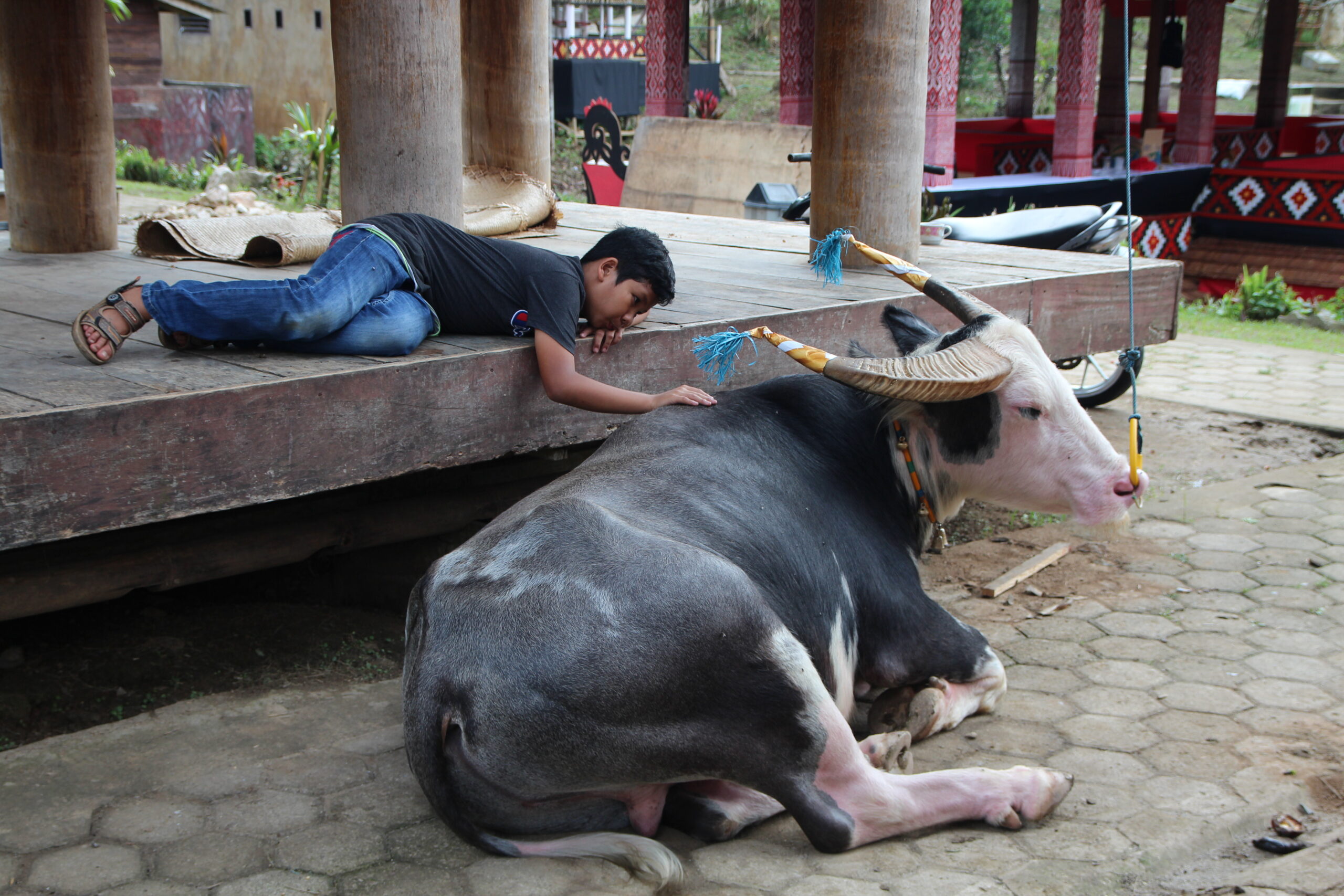
A white-spotted buffalo
So what happens with the deceased until they are waiting for the burial? During this time they are not considered to be completely dead, so they are treated as a person between life and death. To prevent the decaying of the body, the deceased are treated with a formaldehyde infusion and are kept in the Tongkonan houses. They also receive offerings in the form of food, drinks, and cigarettes. Once per year, the bodies are brought out of the Tonkgkonan and are cleaned, and are dressed in new clothes. This tradition is called Manene and takes place every August.

Buffaloes waiting to be sacrificed at Tongkonan To’ Ao’
Once it comes to a funeral, it is an event where the whole village and all relatives are welcome and it takes multiple days. First, it starts with a ceremony for welcoming the guests on the first day and continues with a bullfight after the rituals. Then comes the sacrifice day, which is, in my opinion, a bloody and cruel event. The buffalos are supposed to be killed with only one cut on the neck arteria and left to bleed out, which can take up to 15-20 minutes of suffering. The person performing the sacrifice has a spiritual role and should not be changed during the ceremony. But when the cuts continue to be unsuccessful, it is considered that the person could have some spell or bad magic on him, and in that case, a replacement could happen. Depending on the number of buffaloes, it can take two to three days to sacrifice them all. After this is completed, on the last day of the funeral, the coffin is placed in the burial place.
Best places to visit in Tana Toraja

Kete Kesu
Kete Kesu is a traditional village and a UNESCO world heritage site close to Rante Pao. It is over 400 years old and the classic architectural style is kept in most parts of the village. At the borders of the town lies an old burial site with hanging graves and burial caves. The higher-laying graves were reserved for families belonging to the noble classes and the lower ones for the lower classes. Torajans believed, that if someone was buried in a higher spot, the person would be able to reach the afterworld easier.

Palawa village
Palawa is the oldest village in Tana Toraja and has a truly impressive center with elaborately decorated Tongkonan houses. I liked Palawa more than Kete Kesu. It is situated in northern Toraja, further way from Rante Pao, so it receives fewer visitors and has a calmer and more authentic atmosphere.
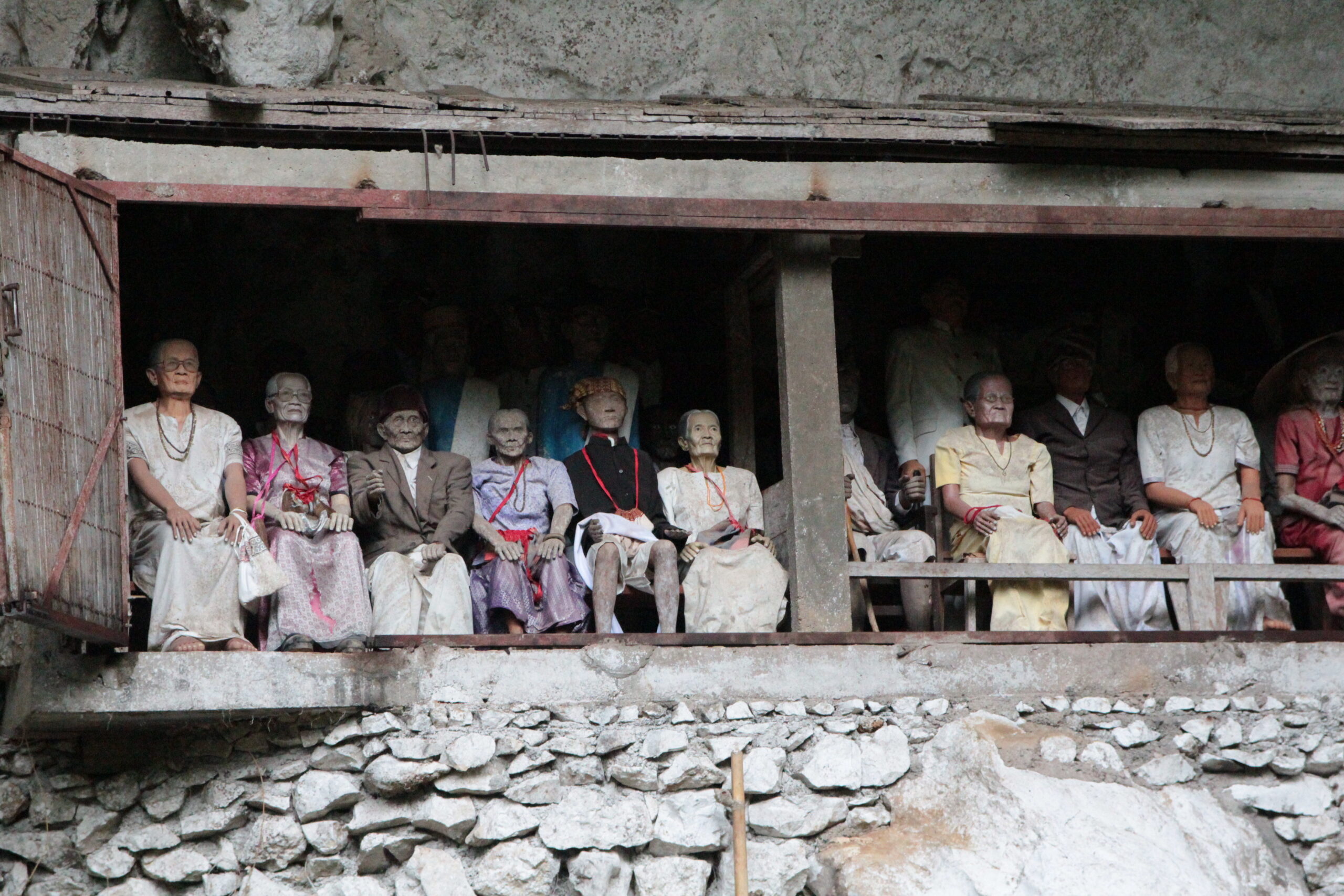
Londa ancient graveyard
Londa is located just a few kilometers from Rante Pao and you can also easily hike there. It is famous for two burial caves on the site and for hanging coffins. Another peculiarity of the place is the huge number of Tau-Tau sculptures, which are arranged in caves resembling balconies on the cliff. The Tau-Tau are life-sized wooden sculptures representing the deceased and function as guardians of the tomb and as a link between life and death.

Lemo burial site
Lemo is another famous burial site located a bit further away from Rante Pao. Here, the coffins are placed in smaller caves carved out of the rock. You can also see plenty of Tau-Tau sculptures in Lemo and there are also some wood carving masters having their workshops close to the graveyard. The wood used for the Tau-Tau depends on the social status of the deceased. for the lower classes, bamboo is used, and for the higher sandalwood or jackfruit.
Fotógeléria
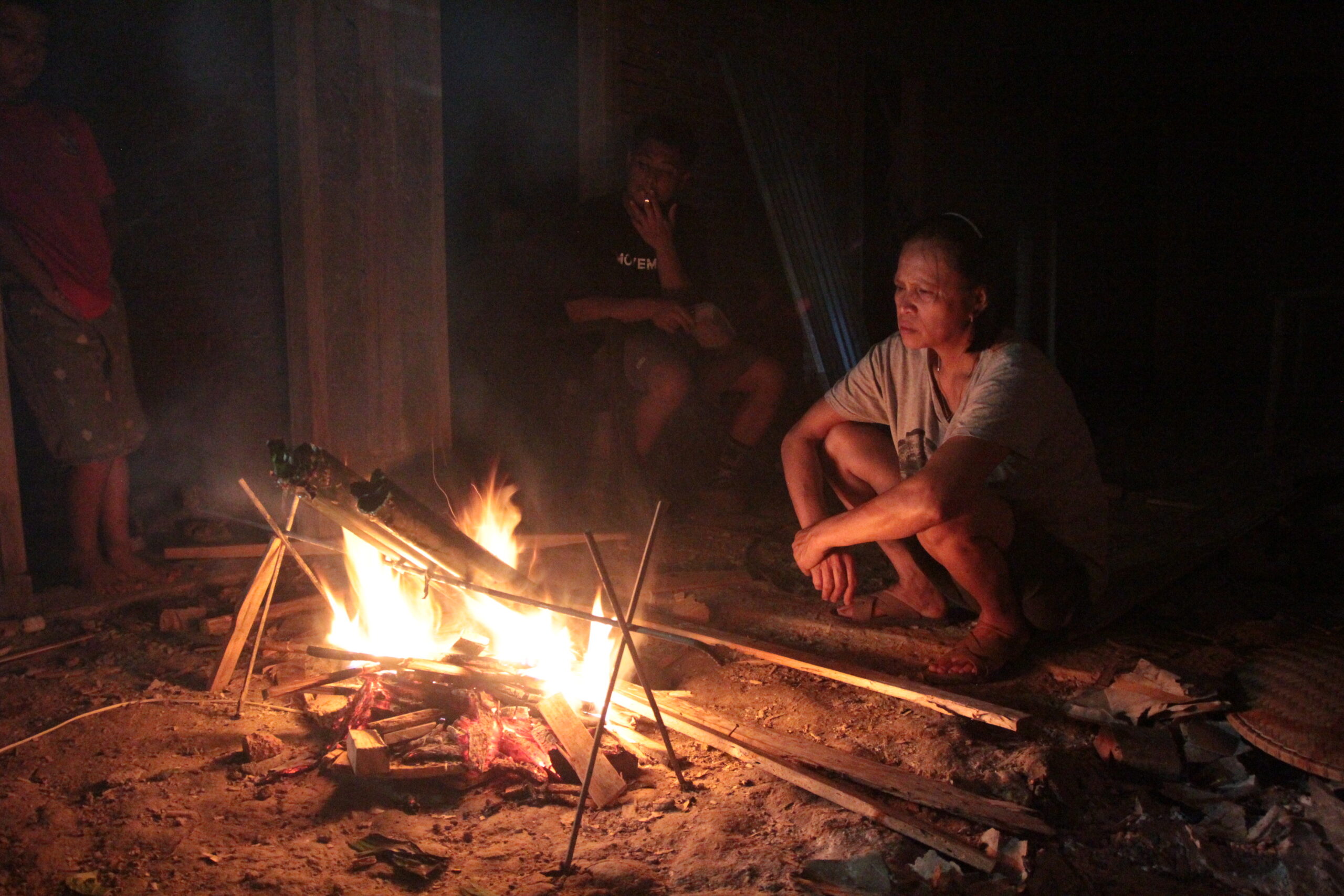
A local lady preparing a traditional meal with rice, chicken and coconut stuffed in bamboo sticks and cooked on fire
Landscape in southern Toraja
The center of Kete Kesu
Rice terraces in northern Toraja
Bulls at the funeral fights tend to run out of the ring and continue to fight on the streets or in someone’s garden…
Cooking for the guests at one of the funerals
Torajan man at a funeral
Palawa village in northern Toraja
Hanging graves at Kete Kesu
Lemo burial site
Tau-Tau sculptures at Lemo
Cigarette offerings for a deceased at Londa burial cave
Torajan marriage ceremony
A buffalo waiting for his destiny at a funeral
Carvings on a Tongkonan house at Buntupune
With local girls at a funeral



